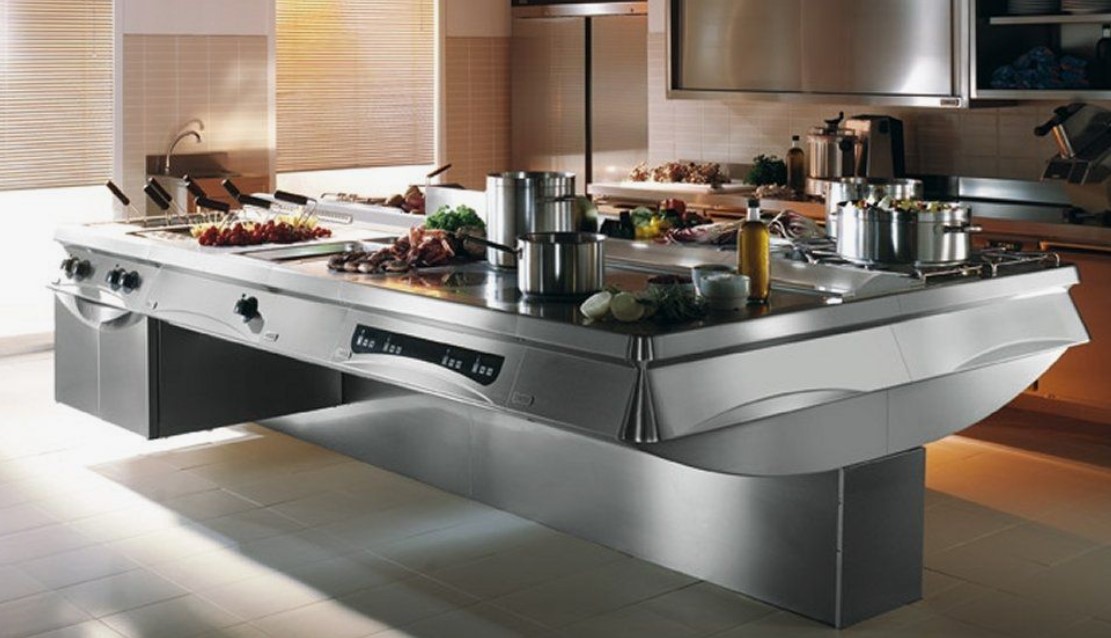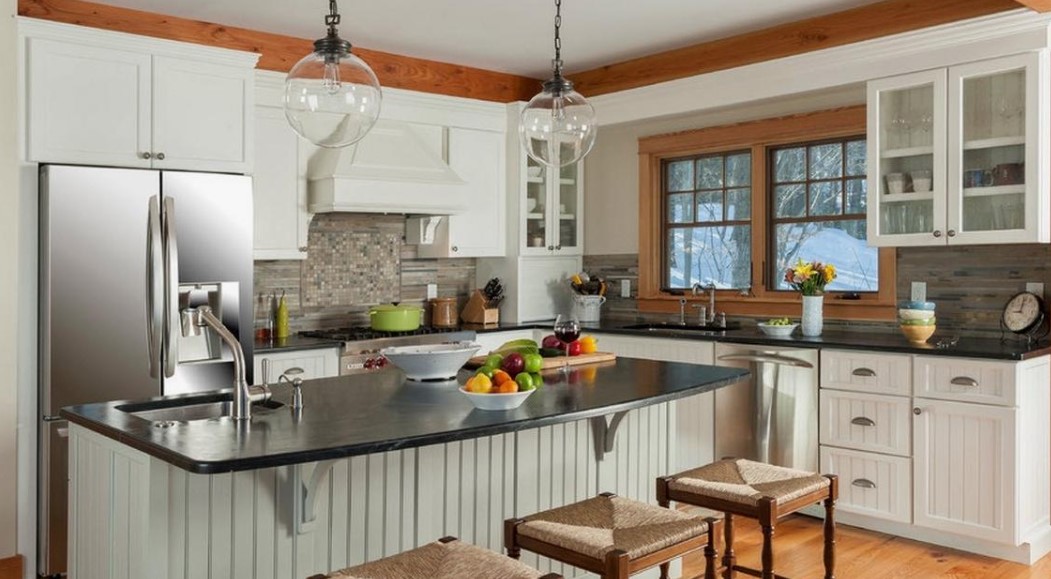In the modern culinary landscape, the line between home kitchens and professional kitchens has become increasingly blurred. Once the preserve of restaurants and cafes, professional “kitchen equipment Dubai” is now considered essential for serious home cooks. This equipment allows for the preparation of diverse, high-quality dishes with efficiency and ease, making it a valuable addition to any kitchen, regardless of whether you’re cooking for a large family gathering or a simple meal for two. This article will delve into the various types of professional kitchen equipment Dubai and offer tips for choosing the best tools for your kitchen.
Types of Professional Kitchen Equipment
Understanding the different categories of kitchen equipment is crucial in selecting the right tools for your needs. Professional kitchen equipment can be broadly classified into several categories:
1. Heating Equipment
Overview: Heating equipment is the backbone of any kitchen, responsible for cooking food through various methods such as baking, frying, grilling, or steaming.
Examples: Stoves, ovens, grills, fryers, and steamers.
Key Considerations: When choosing heating equipment, consider the fuel type (gas, electric, or induction), energy efficiency, and the specific cooking techniques you frequently use.
2. Refrigeration Equipment
Overview: Refrigeration equipment is essential for preserving food by maintaining low temperatures, preventing spoilage, and extending the shelf life of ingredients.
Examples: Refrigerators, freezers, blast chillers, and wine coolers.
Key Considerations: Look for equipment with robust temperature control, energy efficiency, and the right capacity to meet your storage needs.
3. Confectionery Equipment
Overview: Specialized equipment designed for making sweets, chocolates, and other confectionery items.
Examples: Chocolate tempering machines, sugar boiling equipment, and candy-making tools.
Key Considerations: Precision and temperature control are critical, as confectionery requires exacting standards for success.

4. Bakery Equipment
Overview: Bakery equipment is tailored for producing various baked goods, from bread to pastries.
Examples: Dough mixers, proofing cabinets, bread slicers, and ovens specifically designed for baking.
Key Considerations: Consistent temperature and humidity control are vital for achieving perfect results in baking.
5. Electromechanical Equipment
Overview: This category includes devices that use mechanical processes to aid in food preparation.
Examples: Food processors, blenders, mixers, and slicers.
Key Considerations: Durability, ease of use, and versatility are important, as these tools often perform multiple functions in the kitchen.
6. Dishwasher Equipment
Overview: Dishwashers are indispensable in maintaining hygiene and cleanliness in the kitchen, especially after preparing large meals.
Examples: Commercial dishwashers, glass washers, and utensil washers.
Key Considerations: Capacity, efficiency, and water consumption are crucial factors when selecting dishwashing equipment.
7. Bar Equipment
Overview: Bar equipment is used for preparing and serving beverages, whether alcoholic or non-alcoholic.
Examples: Ice makers, juicers, blenders, and coffee machines.
Key Considerations: Speed, ease of cleaning, and the ability to handle high volumes are key for effective bar operations.
8. Additional Equipment
Overview: This category encompasses a range of tools and accessories that support various kitchen functions.
Examples: Knives, cutting boards, storage containers, and small appliances like toasters or microwaves.
Key Considerations: Focus on quality, ease of maintenance, and the specific needs of your cooking style.
How to Choose High-Quality Kitchen Equipment
Selecting the right professional kitchen equipment can be daunting, given the vast array of options available. However, by following a few key recommendations, you can ensure that you make informed choices that meet your needs and stand the test of time.
1. Consider the Manufacturer
Reputation: Opt for equipment from well-known brands with a proven track record. A company’s reputation for reliability, innovation, and customer service is a strong indicator of the quality of its products.
Research: Read reviews, seek expert advice, and consult other users to gather insights on different brands.
2. Pay Attention to Material Quality
Durability: Stainless steel is the gold standard for professional kitchen equipment due to its strength, corrosion resistance, and ease of cleaning. It ensures longevity and maintains hygiene, which is critical in any kitchen setting.
Maintenance: Consider how easy the equipment is to clean and maintain. Poorly maintained equipment can harbor bacteria and reduce the overall lifespan of the appliance.
3. Evaluate Service Life
Longevity: Invest in equipment known for its long service life. Frequent repairs or replacements can be costly and disruptive, so it’s worth paying more upfront for items that will last.
Research: Look for models with high ratings and positive feedback on their durability and performance over time.

4. Check for a Manufacturer’s Warranty
Protection: A solid warranty provides peace of mind, covering repairs or replacements in case of defects or malfunctions.
Confidence: Brands offering comprehensive warranties are typically more confident in the quality of their products.
5. Ensure Compliance with Standards
Health and Safety: The equipment must meet all relevant quality standards and hygiene regulations. This is particularly important for equipment that comes into direct contact with food.
Certifications: Look for certifications from recognized bodies that confirm the equipment’s compliance with safety and hygiene standards.
6. Consider the Functionality
Efficiency: Multifunctional equipment can be more efficient and cost-effective, replacing the need for several different devices. For example, a combi-oven that can bake, steam, and roast can save both space and money.
Ergonomics: Equipment that is easy to use and ergonomically designed can significantly enhance the cooking experience, reducing fatigue and increasing productivity.
7. Take Individual Needs into Account
Household Size: The size of your household and the frequency of your cooking activities will influence the type and size of equipment you need. A larger family might require a double oven or a commercial-grade refrigerator.
Usage: If you cook often and prepare complex dishes, investing in high-end, professional-grade equipment may be worthwhile. For occasional cooks, a more modest selection may suffice.
Leading Brands in Professional Kitchen Equipment
When it comes to choosing professional kitchen equipment, certain brands stand out for their commitment to quality, innovation, and durability. Here are some of the top manufacturers to consider:
1. Bosch
Overview: A German company renowned for its precision engineering and reliable household appliances.
Specialty: Bosch is known for producing energy-efficient, durable, and technologically advanced kitchen equipment.
2. Miele
Overview: Miele is synonymous with luxury, offering premium kitchen appliances that blend innovative technology with timeless design.
Specialty: The brand is especially known for its high-performance ovens, dishwashers, and coffee machines.
3. SMEG
Overview: An Italian brand famous for its stylish design and high-quality products, which include both domestic and professional appliances.
Specialty: SMEG’s range includes iconic retro-style refrigerators and sophisticated bakery equipment, such as proofing cabinets.
4. Kuppersbusch
Overview: A leading manufacturer of luxury kitchen appliances, Kuppersbusch combines cutting-edge technology with elegant design.
Specialty: Known for its unique functionality and progressive design, Kuppersbusch appliances are ideal for modern, sophisticated kitchens.
5. Teka
Overview: Founded in 1924, Teka is a global brand specializing in kitchen and bathroom equipment, known for its blend of technology and design.
Specialty: Teka’s products, including ovens, stoves, and hoods, are valued for their durability and efficiency.
6. AEG
Overview: With over 130 years of experience, AEG is a German company that has consistently delivered high-quality, innovative kitchen appliances.
Specialty: AEG is celebrated for its energy-efficient and powerful ovens, stoves, and dishwashers.
7. ASKO
Overview: A Swedish company that produces reliable, high-performance kitchen appliances with a focus on functionality and design.
Specialty: ASKO is particularly known for its robust dishwashers and laundry appliances.
8. KitchenAid
Overview: Founded in 1919, KitchenAid is now a subsidiary of Whirlpool Corporation and is best known for its iconic stand mixers.
Specialty: KitchenAid offers a range of high-quality kitchen appliances, from mixers to ovens, all known for their durability and timeless design.
9. Whirlpool
Overview: Whirlpool is a household name known for producing a wide range of energy-efficient appliances.
Specialty: The brand offers a variety of products, including refrigerators, dishwashers, and microwave ovens, all designed with a focus on sustainability and user convenience.
Conclusion
Investing in professional kitchen equipment can transform your home kitchen into a culinary haven, allowing you to prepare meals with the same precision and quality found in top restaurants. By understanding the different types of equipment and carefully considering factors like material quality, functionality, and brand reputation, you can choose the right tools that meet your needs and elevate your cooking experience. Whether you’re a passionate home cook or a professional chef, the right kitchen equipment is an invaluable asset in creating delicious, memorable dishes for any occasion.

Snowboarder, risk-taker, ukulelist, Eames fan and typography affectionado. Acting at the crossroads of beauty and mathematics to craft experiences that go beyond design. I prefer clear logic to decoration.
